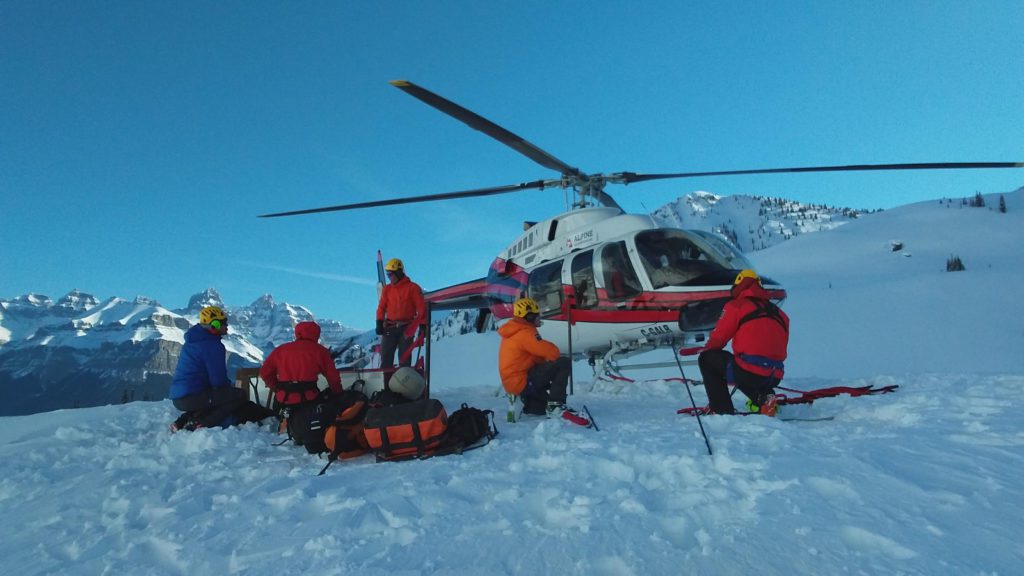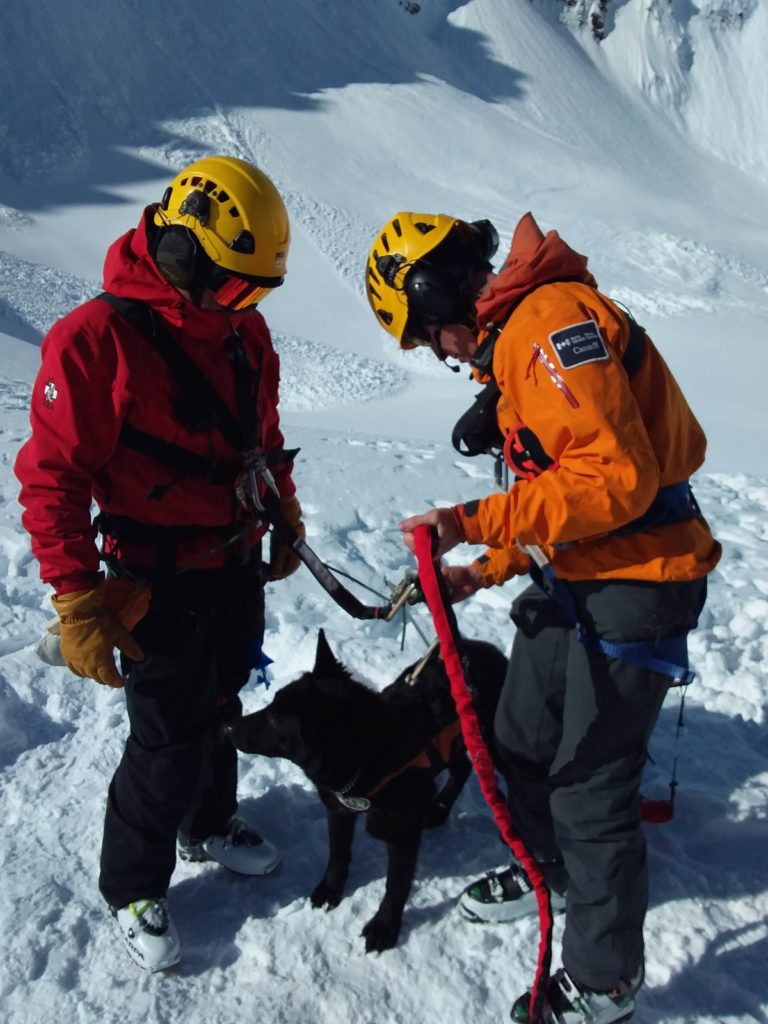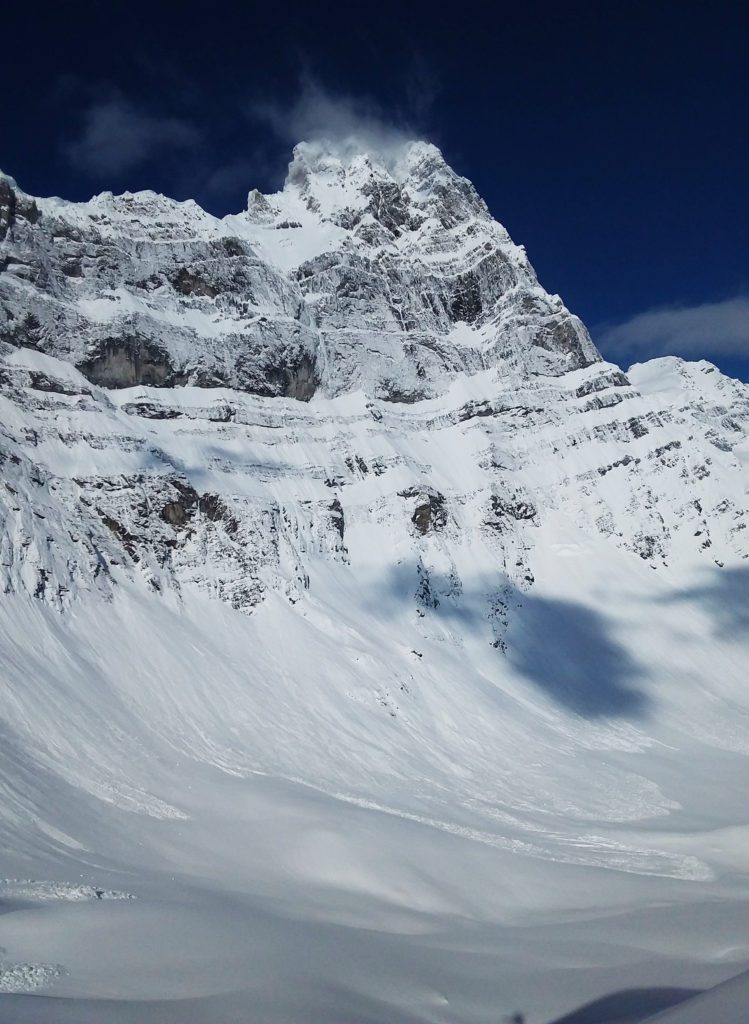Parks Canada’s Report on Deadly Howse Peak Avalanche

Parks Canada search and rescue workers recovered the bodies of David Lama, Jess Roskelley and Hansjorg Auer this past weekend from the base of Howse Peak in Banff National Park. Known as three of the best alpinists in the world, their deaths continue to rattle the climbing community.
The north and northeast faces of Howse Peak have long been the focus of top climbers. There are a handful of established routes up the wall. There’s no way for Parks Canada to do avalanche control, so going in on rescue calls is extremely dangerous.
Parks Canada had to use a number of methods to search the area, including fly-bys on the end of a longline beneath a helicopter and an avalanche dog. See below of Parks Canada’s report about the avalanche.
Parks Canada Report
On Wednesday, April 17, a party of three highly skilled and experienced climbers – Jess Roskelley, David Lama and Hansjörg Auer – were reported overdue after failing to check in while attempting a route on the east face of Howse Peak off the Icefields Parkway in Banff National Park.
Parks Canada visitor safety specialists responded immediately and observed signs of multiple avalanches and debris containing climbing equipment. Based on an initial aerial reconnaissance of the scene, it was concluded that all three members of the party were deceased. At that time, visitor safety specialists placed an avalanche transceiver in the vicinity of the debris to facilitate the search and recovery efforts. However, weather and avalanche conditions did not permit ground search and recovery efforts.
On Thursday, April 18, an aerial search was attempted. Poor weather limited opportunities to search the mountain face and no ground search was conducted due to the elevated avalanche hazard.
On the afternoon of Thursday, April 18 and on Friday, April 19, search and recovery efforts were not possible due to weather and dangerous avalanche conditions. Precipitation and strong winds resulted in a heightened risk of avalanches hazard in the area.

On Saturday, April 20, Parks Canada Visitor Safety teams were able to conduct an aerial search which included the climbing route from base to peak and a possible descent route on the opposite side of the mountain. Visitor Safety specialists were then inserted by helicopter long-line into the vicinity of the transceiver which had been covered by snow following a storm and fresh avalanche debris. Due to the elevated avalanche risk, the visitor safety specialist stayed attached to a long-line to allow for immediate evacuation in case of avalanche. The site was probed and searched unsuccessfully until the weather and light conditions deteriorated, halting recovery efforts.
On the morning of Sunday, April 21, the Visitor Safety team was inserted and continued probing. When unsuccessful, a specially trained avalanche dog, and her handler were deployed using a helicopter long-line. The avalanche dog searched the area and was able to locate the climbers. The recovery team deployed to the location and successfully recovered the three individuals.
The east face of Howse Peak is remote and an exceptionally difficult objective, with mixed rock and ice routes requiring advanced alpine mountaineering skills. While details are limited, the Roskelley family confirmed that the three climbers were successful at summiting Howse Peak on Tuesday, April 16.
Parks Canada extends our sincere condolences to the Roskelley, Lama and Auer families, as well as their friends and loved ones. Parks Canada would also like to acknowledge the impact that this incident has had on the tight-knit, local and international climbing communities. Parks Canada also expresses its condolences to the family and friends of the other individual who lost their life to an avalanche in Yoho National Park over the weekend.

Heightened avalanche risk in steep mountainous terrain made recovery efforts challenging. Parks Canada thanks our first responders and all assisting agencies for their invaluable support and professionalism including Parks Canada Visitor Safety Specialists and the Incident Command team, Parks Canada Dispatchers, Lake Louise RCMP, Lake Louise Fire Department and Bow Valley Victim Services.
Special thanks go out to the Canadian Avalanche Rescue Dog Association’s (CARDA) certified avalanche dog and her handler, and to the highly skilled pilot from Alpine Helicopters. We are relieved that this recovery has come to a safe and timely conclusion. Our thoughts are with the families and friends of those who lost their lives over the past week.
Avalanche Transceivers
The search and rescue workers are unsung heroes of the backcountry. They often put their lives at risk to save and recover people. Over the past few years, Grant Statham, a mountain guide and mountain risk specialist with Parks Canada has stressed that alpine and ice climbers going into dangerous areas should wear avalanche transceivers.
It would’ve reduced the amount of time the search and rescue workers were exposed to hazards if Lama, Roskelley and Auer had transceivers. It’s not common for alpine climbers to wear or bring transceivers, but with more awareness, Statham hopes it becomes standard practice. There was some shock in the rescue community that the three climbers didn’t have transceivers.
Statham has spoken extensively about this in the past and has tried to get major climbing brands to insert RECCO (helicopter detector technology) into climbing harnesses. Some brands already use RECCO in their clothing and helmets. For more from Statham on wearing transceivers in the backcountry, see here.

Summit of Howse
Lama, Roskelley and Auer did reach the summit of Howse Peak. They were descending when the accident happened. While not certain, it seems the avalanche likely happened high on the route.
They made the second ascent of M16, likely the first free ascent, in a single push and in one day. The first ascent was from March 23 to 27 in the winter season of 1999/2000 by Barry Blanchard, Steve House and Scott Backes.
The first ascent team climbed the face into an upper couloir but didn’t reach the summit ridge or summit because of large cornices. Lama, Roskelley and Auer are the first to climb the route to the summit. A Parks Canada employee said the speed in which they climbed the route is extremely impressive. A week before climbing Howse Peak, the three climbed Andromeda Strain IV M5 on Mount Andromeda.
To lose three of the best alpine climbers in the world in one day is a huge loss. Our heartfelt condolences go to the family and friends of Auer, Lama and Roskelley. Below are some thoughts on the accident from top Rockies climber Will Gadd.


